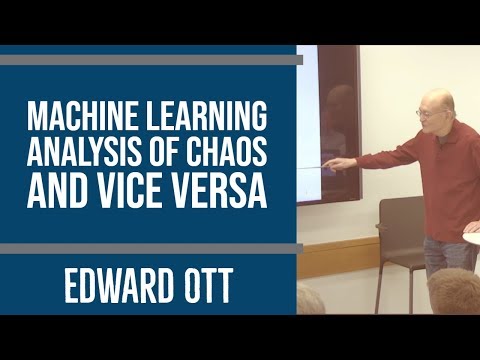Description:
Explore machine learning analysis of chaos and chaos theory's insights into machine learning in this comprehensive lecture by Edward Ott from the University of Maryland. Delve into the use of machine learning to understand chaotic dynamical systems through time series measurements, and discover how chaos theory explains the effectiveness of machine learning in this task. Examine illustrative examples like the Kuramoto-Sivashinsky equation, short-term forecasting of chaos, and the replication of long-term dynamical behavior. Investigate the calculation of Lyapunov exponents, the impact of symmetries on machine learning systems, and the conditions for successful replication of ergodic behavior. Gain insights into generalized synchronization and the echo state property in open-loop configurations, providing a comprehensive understanding of the intersection between machine learning and chaos theory.

Machine Learning Analysis of Chaos and Vice Versa - Edward Ott, University of Maryland
Add to list
#Mathematics
#Chaos Theory
#Computer Science
#Machine Learning
#Data Science
#Data Analysis
#Time Series Analysis
#Lyapunov Exponents